Triangles Class 10th Notes - Free NCERT Class 10 Maths Chapter 6 Notes - Download PDF
Geometry relies on triangles as one of its fundamental elements because they serve as foundations for multiple mathematical definitions, along with practical industrial uses. A triangle is a fundamental closed polygon with three sides and three angles, and three vertices, which are of crucial significance in mathematics. This chapter discusses triangle classifications along with the Pythagoras theorem and the Basic Proportionality theorem, and describes the applications of triangle similarity in direct measurement calculations. The main purpose of these NCERT Notes is to provide students with an efficient study material from which they can revise the entire chapter.
This Story also Contains
- Triangles Class 10 Notes: Free PDF Download
- NCERT Class 10 Maths Chapter 6 Notes: Triangles
- How to Use the Triangles Class 10 Notes Effectively?
- Triangles Class 10 Notes: Previous Year Question and Answer
- NCERT Class 10 Maths Notes – Chapter-Wise Links
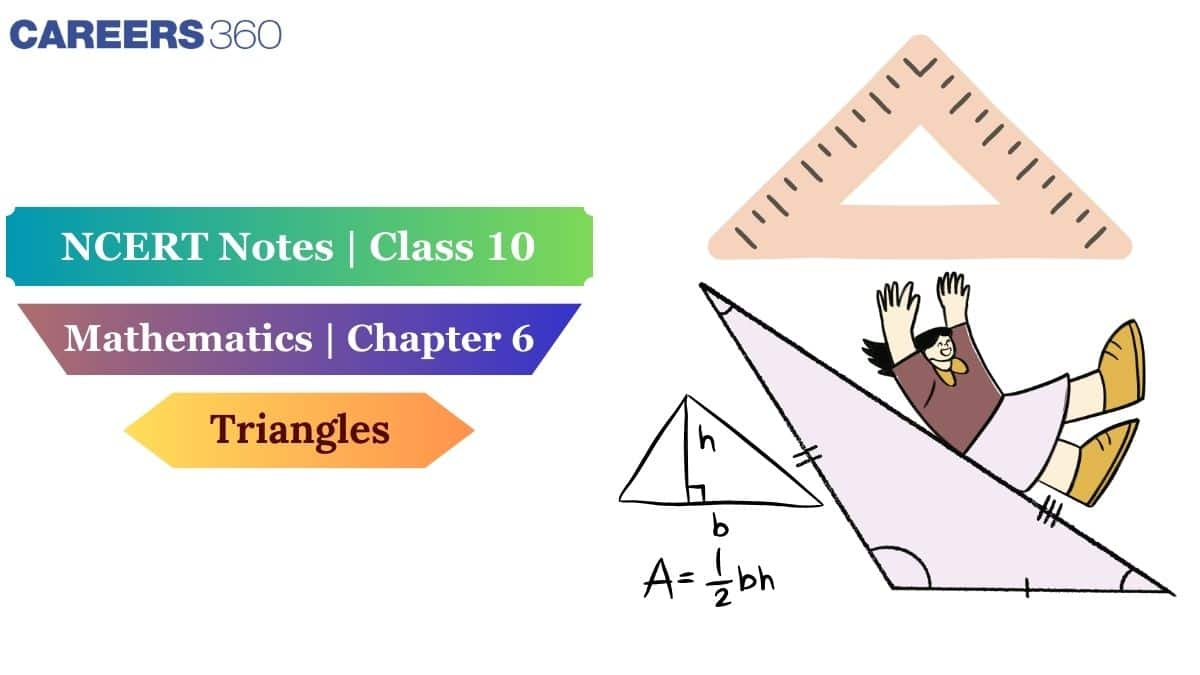
After completing the textbook exercises and solutions, students need study materials that help them recall concepts more quickly. Triangles Class 10 Notes are very useful in this regard. In this article on NCERT Class 10 Maths Notes, everything from definitions and properties to detailed notes, formulas, diagrams, and solved examples is thoroughly covered by our subject matter experts at Careers360 to help students understand important concepts and feel confident about their studies. These NCERT notes are trustworthy and reliable, as they are created by subject matter experts at Careers360, making them an essential resource for exam preparation. Explore NCERT Books, Solutions, Syllabus, and Exemplar Problems with Solutions for complete syllabus coverage in this NCERT article.
Also, read,
Triangles Class 10 Notes: Free PDF Download
Use the link below to download the Triangles Class 10 Notes PDF for free. After that, you can view the PDF anytime you desire without internet access. It is very useful for revision and last-minute studies.
NCERT Class 10 Maths Chapter 6 Notes: Triangles
A triangle exists as a polygon closed by three sides, three angles, and three vertices. Every triangle contains interior angle measures that total up to 180 degrees, and exterior angles total up to 360 degrees.
Types of Triangles
Triangles can be classified based on sides and angles:
Based on Sides
There are different triangle types which depend on the length measurements of their sides. The classification system helps both understand properties and solve related problems more easily. Based on the sides triangle is divided into three types:
- Scalene Triangle: No sides are equal.
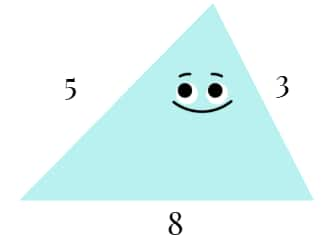
- Isosceles Triangle: Two sides are equal.
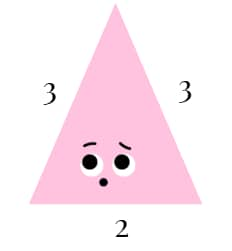
- Equilateral Triangle: All three sides are equal.
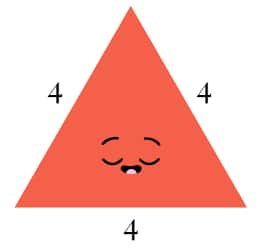
Based on Angles
Relating to angles forms an additional way to categorise triangles. The classification of triangle shapes allows a better understanding of angle characteristics while solving geometric problems. Based on angles, a triangle is divided into 3 types:
- Acute Triangle: All angles are less than 90°
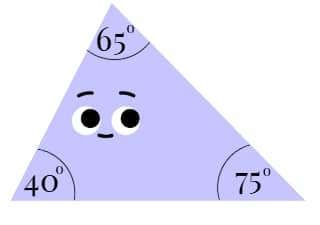
- Right Triangle: One angle is exactly 90°
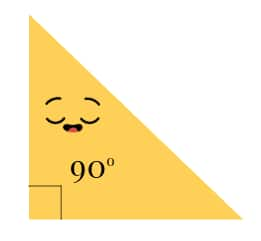
- Obtuse Triangle: One angle is greater than 90°
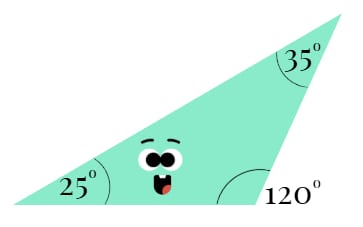
Similarity of Polygons
In geometry, two shapes qualify as similar if they share equivalent shapes regardless of dimensional differences. In the case of polygons, two polygons are said to be similar if:
- Their corresponding angles are equal.
- The ratios between corresponding triangle sides remain equal.
Therefore, this means that if two triangles are given ∆ABC and ∆DEF, they are said to be similar if:
1) ∠A =∠D, ∠B =∠E and ∠C =∠F
As like:-
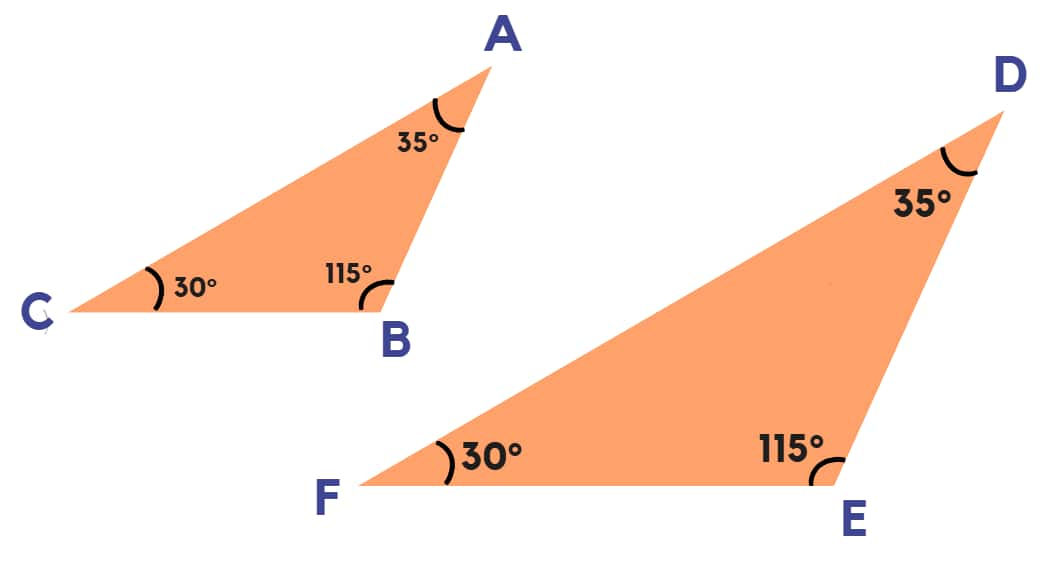
OR
2) $ \frac{AB}{DE} = \frac{BC}{EF} = \frac{AC}{DF} $
As like:-
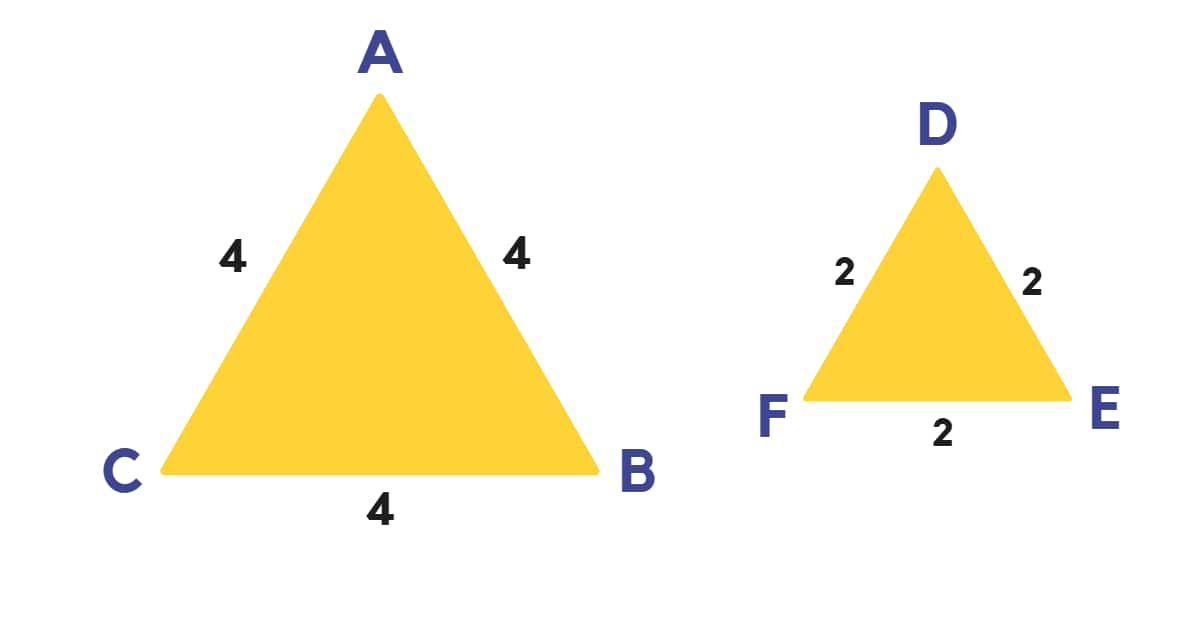
Difference Between Congruent and Similar Figures
-
Congruent Figures:
Two or more triangles are congruent if they have the same size and shape. Congruence is denoted by the symbol "≅" and read as "is congruent to". The shapes perfectly fit together when placed on top of each other. Congruent triangles can be flipped, rotated and mirrored and will still be congruent.
Example: Two copies of the same triangle.
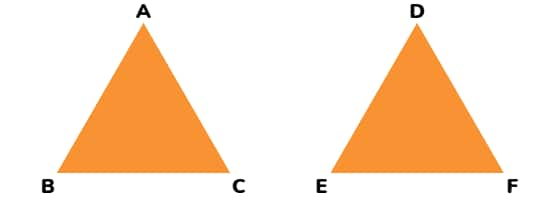
△ABC ≅ △DEF
-
Similar Figures:
Two similar figures have the same shape but not necessarily the same size. One figure may exist at a different scale than the other while retaining the same basic dimensions. Similarity is denoted by the sign “~”.
Example: A small triangle inside a bigger triangle with the same angles but different side lengths.
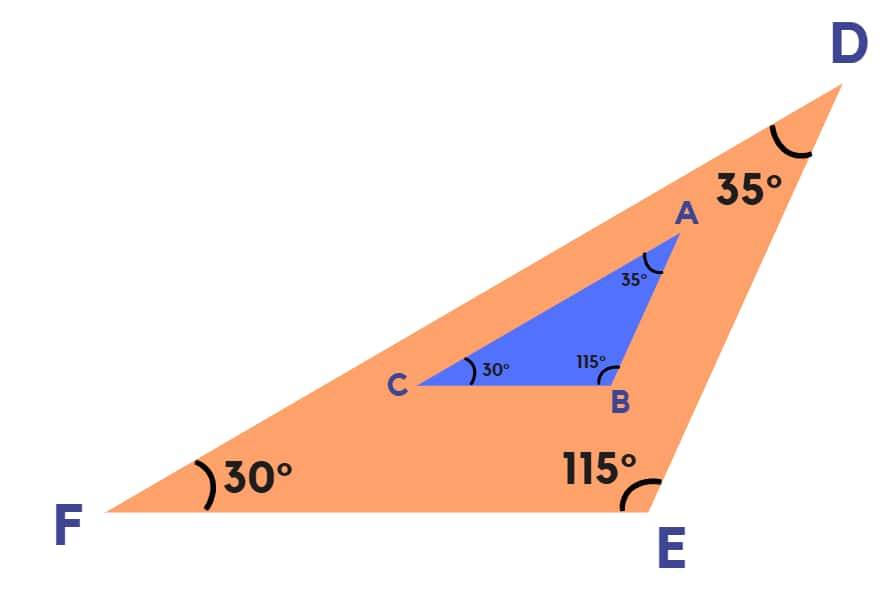
△ABC ~ △DEF
Observation:
From the above, we can say that:
- All congruent figures are similar.
- Similar figures need not be congruent.
Conditions for Similarity of Triangles
To check whether two triangles are similar, there are three conditions:
1. AA (Angle-Angle) Similarity Criterion
If two triangles have their corresponding two angles equal, then the triangles are said to be similar triangles. This happens because when two angles match, the third angle will automatically match. After all, every triangle features a 180° angle total.

2. SSS (Side-Side-Side) Similarity Criterion
Two triangles are similar when their corresponding sides maintain the same ratio because this proportionality results in equal corresponding angles. Example: If in one triangle, the sides are 3 cm, 6 cm, and 9 cm, and in another triangle, the sides are 6 cm, 12 cm, and 18 cm, then the ratio is the same (1:2), so they are similar.

3. SAS (Side-Angle-Side) Similarity Criterion
Two triangles are similar when they share equal angles between corresponding sides, which also stand in an equal proportional relation. Example: If one triangle has sides 5 cm and 10 cm with an included angle of 50°, and another triangle has sides 10 cm and 20 cm with an included angle of 50°, they are similar.

Theorems on Similarity of Triangles
Basic Proportionality Theorem (Thales’ Theorem)
The Basic Proportionality Theorem (BPT), also known as Thales’ Theorem, states that if a line is drawn parallel to one side of a triangle to intersect the other two sides in distinct points, the other two sides are divided in the same ratio.
Mathematical Representation:
Consider ΔABC, where DE is a line parallel to BC, and it cuts AB at D and AC at E. Then, according to the theorem:
$ \frac{AD}{DB} = \frac{AE}{EC} $
Proof:
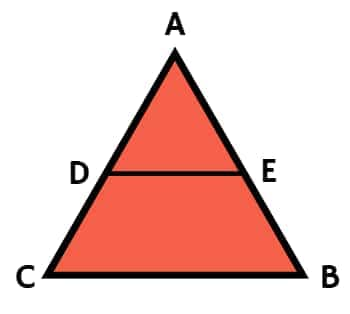
- Since DE is parallel to BC, ∠ADE = ∠ABC and ∠DEA = ∠BCA (corresponding angles).
- By AA similarity, ΔADE is similar to ΔABC.
- As a result of similarity,
$ \frac{AD}{DB} = \frac{AE}{EC} $
Pythagoras Theorem:
As per Pythagoras' Theorem, “In a right-angled triangle, the sum of squares of two sides of a right triangle is equal to the square of the hypotenuse of the triangle.”
This means:
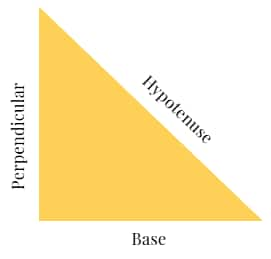
(Hypotenuse)2 = (Base)2 + (Perpendicular)2
Area of Similar Triangles:
When the two similar triangles are given, then the square of the ratio of their corresponding sides will be equal to the ratio of their area.
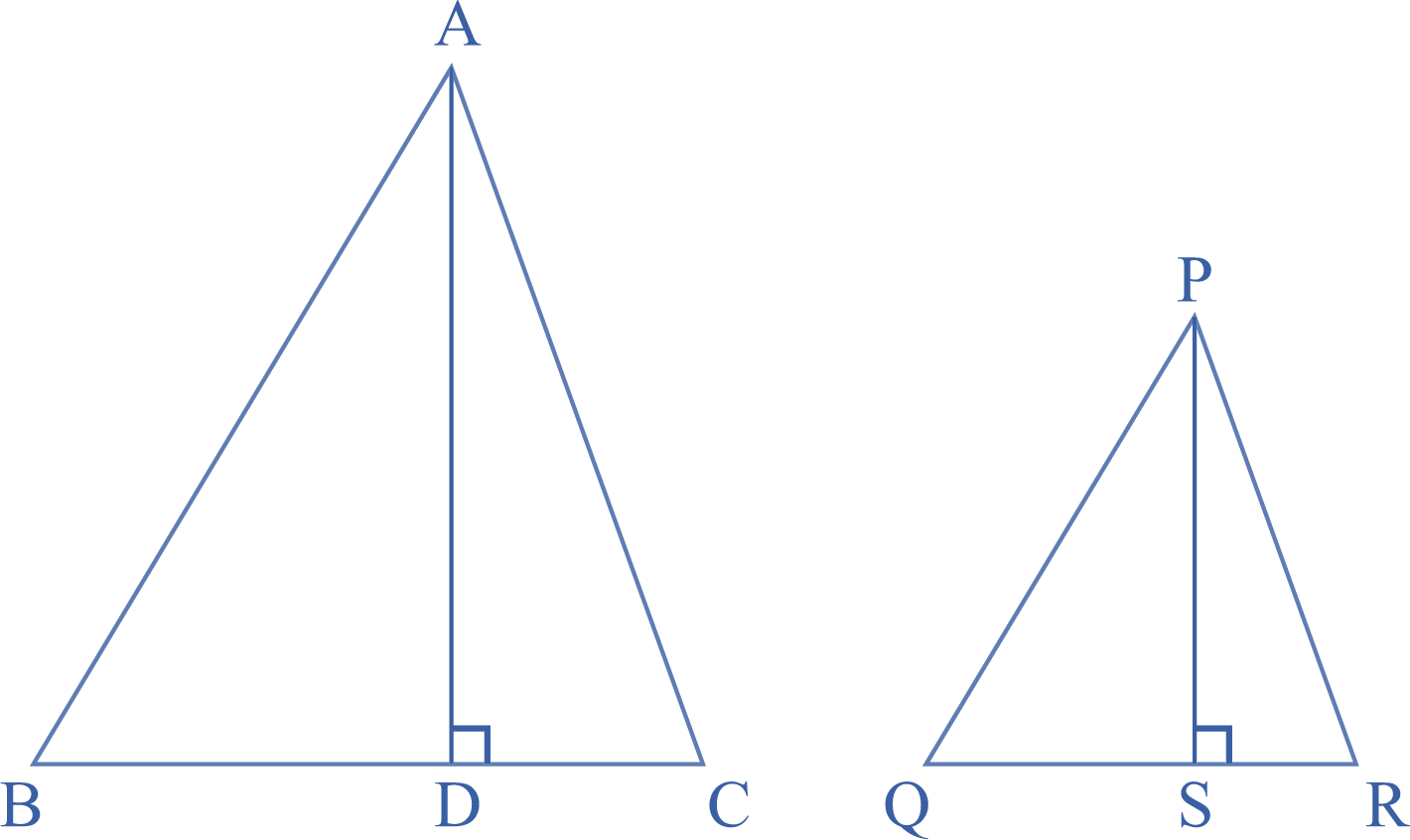
If ∆ABC ~ ∆PQR, then
$ \frac{ar(ABC)}{ar(PQR)} = \frac{AB}{PQ}^2 = \frac{BC}{QR}^2 = \frac{AC}{PR}^2$
How to Use the Triangles Class 10 Notes Effectively?
Triangles in Class 10 mainly teach us about similarity and how figures can have the same shape but different sizes. This chapter also shows us the rules for determining whether two triangles are similar. By going through these topics slowly, the Class 10 Maths chapter 6 notes help us tackle geometry problems easily. Here are some more points on how these notes are important.
- Read the rules of similarity and note down SSS, SAS, and AA criteria so we remember them quickly.
- Drawing small figures while studying examples as diagrams helps us better understand similarity.
- Keep the NCERT Class 10 Maths chapter 6 notes with us during practice to compare steps and avoid confusion.
- Use the NCERT Class 10 Maths chapter 6 notes wisely, because triangle similarity is used again in higher classes and more advanced geometry.
Triangles Class 10 Notes: Previous Year Question and Answer
Given below are some previous year question answers of various examinations from the NCERT class 10 chapter 6 Triangles:
Question 1: The perimeters of two similar triangles are 22 cm and 33 cm, respectively. If one side of the first triangle is 9 cm, then find the length of the corresponding side of the second triangle.
Solution:
Let $x$ be the length of the corresponding side of the second triangle.
Ratio of perimeters of similar triangles = Ratio of corresponding sides.
$\frac{22}{33} = \frac{9}{x}$
$⇒ \frac{2}{3} = \frac{9}{x}$
$⇒ 2x = 3 \times 9$
$⇒ 2x = 27$
$⇒ x = \frac{27}{2} = 13.5$ cm.
Hence, the answer is $13.5$ cm.
Question 2: In $\triangle \mathrm{ABC}, \mathrm{DE} \| \mathrm{BC}$. If $\mathrm{AE}=(2 x+1)\; \mathrm{cm}, \mathrm{EC}=4 \mathrm{~cm}, \mathrm{AD}=(x+1)\; \mathrm{cm}$ and DB $=3 \mathrm{~cm}$, then value of $x$ is

Solution:
$\triangle ABC$, with $DE \| BC$
$AE=(2 x+1) \mathrm{cm}$
$EC=4 \mathrm{~cm}$
$AD=(x+1) \mathrm{cm}$
$DB=3 \mathrm{~cm}$
Basic Proportionality Theorem: If a line is drawn parallel to one side of a triangle and intersects the other two sides, then it divides those two sides in the same ratio.
By Basic Proportionality Theorem:
$\frac{\mathrm{AD}}{\mathrm{DB}} = \frac{\mathrm{AE}}{\mathrm{EC}}$
Substitute the given values:
$\frac{x + 1}{3} = \frac{2x + 1}{4}$
$\Rightarrow 4(x + 1) = 3(2x + 1)$
$\Rightarrow 4x + 4 = 6x + 3$
$\Rightarrow 4 - 3 = 6x - 4x$
$\Rightarrow 1 = 2x$
$\Rightarrow x = \frac{1}{2}$
Hence, the correct answer is $\frac{1}{2}$.
Question 3:
Assertion (A): $\triangle \mathrm{ABC} \sim \triangle \mathrm{PQR}$ such that $\angle \mathrm{A}=65^{\circ}, \angle \mathrm{C}=60^{\circ}$. Hence $\angle Q=55^{\circ}$.
Reason (R): The Sum of all angles of a triangle is $180^{\circ}$.
Option (1): Both Assertion (A) and Reason (R) are true, and Reason (R) is a correct explanation of Assertion (A).
Option (2): Both Assertion (A) and Reason (R) are true, but Reason (R) is not a correct explanation for Assertion (A).
Option (3): Assertion (A) is true, but Reason (R) is false.
Option (4): Assertion (A) is false, but Reason (R) is true.
Solution:
It is known that the sum of all angles of a triangle is $180^{\circ}$
So, Reason (R) is true (sum of angles in a triangle is $180^{\circ}$).
Since $\triangle A B C \sim \triangle P Q R$, their corresponding angles are equal.
Given: $\angle A=65^{\circ}, \angle C=60^{\circ}$
Let's find $\angle B$ using triangle angle sum:
$\angle B=180^{\circ}-\left(65^{\circ}+60^{\circ}\right)=55^{\circ}$
So, in the similar triangle $\triangle P Q R$ :
$\angle A = \angle P=65^{\circ}$
$\angle B = \angle Q=55^{\circ}$
$\angle C= \angle R=60^{\circ}$
So, the assertion is also TRUE.
Hence, the correct answer is option (1).
NCERT Class 10 Maths Notes – Chapter-Wise Links
All the links to chapter-wise notes for NCERT class 10 maths are given below:
NCERT Exemplar Solutions for Class 10
NCERT Solutions for Class 10
Students must check the NCERT solutions for class 10 of Mathematics and Science Subjects.
NCERT Books and Syllabus
To learn about the NCERT books and syllabus, read the following articles and get a direct link to download them.
Frequently Asked Questions (FAQs)
The sixth chapter of NCERT Class 10 Maths textbook focuses on demonstrating the concepts of similar and congruent triangles. This chapter offers multiple theorems about triangle similarity which contain the Pythagoras theorem and the Basic Proportionality Theorem (Thales Theorem) and advanced methods to establish triangular similarity.
- The total measure of interior angles in a triangle always amounts to 180 degrees.
- In a triangle, the exterior angle contains the total measurement of its two opposite interior angles.
- For a triangle, all combinations of two sides should measure higher than the remaining third side (Triangle Inequality Theorem).
- Right-angled triangles function under the principles of Pythagoras' theorem.
- Similar triangles share equal corresponding angles in addition to having proportions that match between corresponding sides.
The Pythagoras theorem states that in a right-angled triangle:
(Hypotenuse)2 = (Base)2 + (Height)2
To solve the problems related to right-angled triangles, this theorem is used.
Two triangles demonstrate similarity when all pairs of angles match in size and the lengths of their sides maintain identical ratios. The proof of similarity requires the following:
- AA (Angle-Angle) Similarity Criterion: The two triangles share similarity when they have matching angles which equal those in the other triangle.
- SSS (Side-Side-Side) Similarity Criterion: Two triangles are similar when their corresponding sides have equivalent ratios.
- SAS (Side-Angle-Side) Similarity Criterion: A pair of triangles is similar if two matching sides have proportional length ratios and an angle between them are equal.
- Based on Sides:
Scalene Triangle: No sides are equal.
Isosceles Triangle: Two sides are equal.
Equilateral Triangle: All three sides are equal. - Based on Angles:
Acute Triangle: All angles are less than 90°.
Right Triangle: One angle is exactly 90°.
Obtuse Triangle: One angle is more than 90°.
Courses After 12th
Applications for Admissions are open.
As per latest syllabus. Physics formulas, equations, & laws of class 11 & 12th chapters
JEE Main Important Chemistry formulas
Get nowAs per latest syllabus. Chemistry formulas, equations, & laws of class 11 & 12th chapters
JEE Main high scoring chapters and topics
Get nowAs per latest 2024 syllabus. Study 40% syllabus and score upto 100% marks in JEE
JEE Main Important Mathematics Formulas
Get nowAs per latest syllabus. Maths formulas, equations, & theorems of class 11 & 12th chapters
